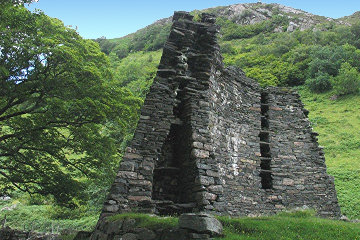The Brochs of Glenelg

| ||
| There are internal staircases in the thickness of the walls | ||
No one knows what a broch is, but once seen, the cooling-tower shape is never forgotten. Whether fortresses or manor houses, they must have been uncomfortable to live in - though doubtless better than the squalid bothies of the Pictish peasantry.
Over the years most have either given way to Scotland's weather or have been demolished by thrifty Scots seeking a cheap source of ready-cut building stone. The two in Glenelg are probably the best preserved on the Scottish mainland (though they are more than half demolished by local builders) and for that reason interesting. (There is a third further up the valley, but I can find no detailed information about it.) They are also interesting because they are sited so close together.
Brochs were built in the period 700 BC to AD 100 (other experts say 200 BC to AD 300), but whichever date you take, it would seem that they ceased to be built around the time that Christianity came to Pictland. Whether the two facts are related is, of course, impossible to say, but if the brochs are analogous to the towers of Siena or the Mani, then the peace brought by the new religion would have made them redundant.
 Glenelg
Glenelg